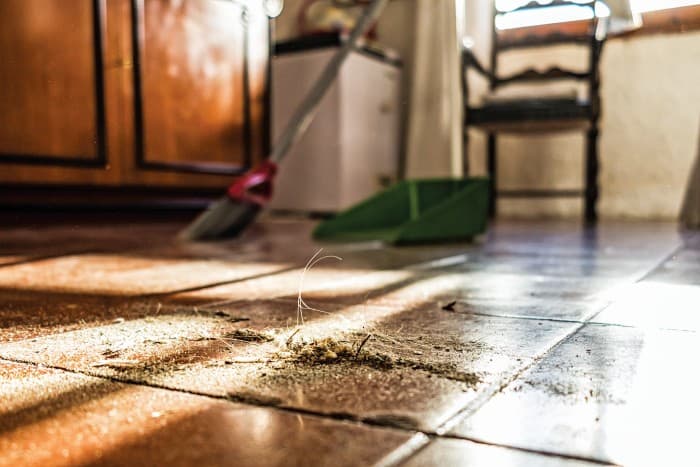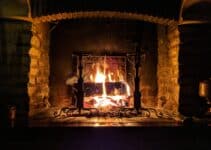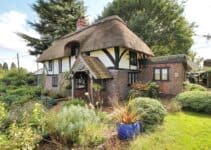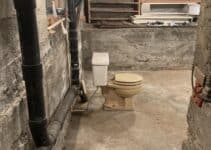If you’ve ever lived in an old house, you probably already know they can be very dusty. It’s even more obvious if you’ve lived in a newer home, as the difference in dust levels can be very surprising.
But why is this? Why are old houses so dusty? Old houses tend to be dusty due to the accumulation of dust particles over many years and potential lack of modern sealing and insulation techniques, which can allow more dust and dirt to enter from outside.
Additionally, materials in older homes, such as aging woodwork and crumbling plaster, can contribute to increased dust levels.
But these are the questions we’ll answer in this article. Read on to find out why old houses are dusty and discover some tips to solve the issue.
Are Old Houses More Dusty?
Old houses are objectively more dusty than newer builds. There are many reasons for this, all of which relate to the age and quality of the building.
Whether it’s older plaster and carpet, ill-fitted windows, or something else, an old house will always be dustier than a new one.
Aside from the reasons why there’s more dust in older homes (which we’ll discuss below), an obvious difference is how long the building has been around to collect dust.
Unless your cleaning regime involves pulling up the carpet and cleaning underneath it, there are plenty of areas where dust could sit for years before it’s disturbed.
To understand why old houses are more dusty, it’s worth thinking about what dust actually is:
Dust is a melange of tiny particles that can travel through the air and settle on furniture, clothing, and carpet. It can be made of a wide range of things, including hair and skin cells, pet dander, fabric fibres, dirt and soil, pollen, food particles, mould, and more.
Long story short, a building that has been around for a long time will be home to a lot of these things. While you might be able to minimise the extent of pet dander, there’s not much you can do about things like skin cells, hair, and fabric fibres.

Why Do Old Houses Get So Dusty?
Old houses get dusty for a number of reasons. Based on what dust is made from, you should be able to figure out why old houses get so dusty. Even so, here’s an explicit list of the main reasons why old homes are dustier than newer ones.
1. Old Carpet
A big cause of fabric fibres in dust comes from old carpets and their underlays.
Carpet itself can hold on to dust really well, meaning it gets thrown into the air when you hoover, or even walk on the carpet.
But as a carpet ages, its fibres can come loose and break down. This contributes more fibres to the dust itself. The same is true for carpet underlays, especially ones containing rubber.
Although a resilient material, it’ll eventually break down and crumble. Once these particles get small enough, they can be considered dust.
2. Pets and Previous Residents
It’s a bit gross to think about, but the more people that have lived in your home before you, the more human waste there’s going to be!
Sure, this is only really relevant for the first few months that you live there, but it’ll be a more obvious issue than if you moved into a new build.
The same is true for pets. Even a thorough clean will leave behind some evidence of pets, as it’s almost impossible to clean up all those stray hairs.
And hairs are only the bit you can see! If you start to think about all the pet dander (skin cells) left behind, the issue becomes far more gross.
Either way, you and your own pets will start contributing your own hair and skin cells to the home from the day you move in.
While this is also an issue in newer homes, old buildings have a good starter layer of existing dust to build upon.
3. Leaky Windows and Doors
Generally, older homes will have poorer windows and doors. They might only be small single-glazed windows or the building might have shifted since they were installed.
Either way, gaps and cracks around window fittings can be a major source of outside dust getting into your old home.
It’s less of an issue if you’ve had double-glazing put in or you’ve done some recent renovations. But you must also consider less obvious issues like gaps around the roof or in the ceiling, or any other cracks around the building.
Any opening that lets in air will also let in dust.
4. Deteriorating Building Materials
As with old carpets, building materials in old houses will deteriorate over time.
This contributes particles to dust, and it can be a particularly big issue in homes that haven’t been well maintained.
Pretty much anything used to build a home can deteriorate and contribute to dust, including:
· Plaster
· Cavity wall insulation
· Drywall, ceiling tiles, etc.
· Paint
· Bricks, mortar, etc.
There are so many factors that can lead to these materials breaking down, but it’ll happen sooner or later.
Obviously, it’s not an issue in newer buildings or in those that have been recently renovated. But unless you’re building your old home again from the ground up, something in it will be old.
5. Household Pests
Household pests don’t have to just be rats and mice, although they’ll contribute their fair share to dust. It can also include spiders, other bugs, and dust mites.
One way or another, these pests will contribute to dust levels in your home, whether it’s their waste, old webs, or food waste.
But why do old homes have bigger pest problems than newer ones?
There are many reasons, but it can be as simple as more hidey holes for the pests, easier access from outside, or better food (such as untreated wood).
While you can usually keep rat and mice populations under control, things like spiders and mites are much harder to manage.
You’ll probably find yourself just cleaning up after spiders rather than trying to completely remove them from your home.
Where Does Dust Come from in Old Houses?
As we’ve established, dust comes from both inside and outside in old houses. There are so many contributing factors that it can be difficult to manage them and reduce the amount of dust in your home.
That said, there are a few tricks you can try when it comes to minimising dust in your old home. Bear in mind, though, that it’ll take a lot of work.
1. Clean Regularly
This is a bit of a no-brainer, but clean regularly to stay on top of dust levels. Some might suggest cleaning daily, but this is a bit much.
Once a week should be fine, provided you’re thorough and use the right tools and techniques.
For example, consider getting a vacuum cleaner with a HEPA filter or similar. This guarantees the removal of most dust particles from the air.
If you combine it with a pet-specific vacuum cleaner, you should find the level of suction is enough to get a lot of dust out of old carpets.
Another tip is to work from the top of the room to the bottom, and to always hoover after dusting. A duster and polish will usually just push dust into the air rather than remove it.
You should give it 10 minutes or so and then hoover to better remove dust from your home.
2. Do Some Renovations
Granted, this is a bit more of an expensive option, but it depends on how bad the dust is in your home. Doing some renovations will help cut down on the causes of dust to hopefully make it more manageable.
Depending on the state of your home, some options include:
· Replacing or re-sealing doors and windows
· Replacing worn plaster
· Fitting new carpets
· Repainting
Repainting is probably the cheapest option and, if nothing else, will seal old plaster again. An advantage of more in-depth renovations is that they should make your home more energy efficient.
Replacing worn carpets and underlays with new ones will add far more insulation to your home, too.
3. Shampoo the Carpet
If replacing the carpet isn’t necessary or is too expensive, the next best thing is to shampoo it. Rent a carpet cleaner and spend a few days thoroughly cleaning your carpet.
This should help to remove a lot of build-up, which should reduce the amount of dust it kicks up.
A good carpet can last 20 years or more, especially with a bit of TLC. While you might not know when your carpet was installed, an annual shampoo will keep it as fresh as possible until it needs replacing.
This will definitely get rid of the old house smell!
4. Get an Air Filter
A fairly obvious solution to dust is to run an air filter. These come in all shapes and sizes and can have filters of all strengths.
As mentioned, a HEPA filter is the most thorough in removing airborne particles.
For best results, clean a room first because this’ll kick up dust. Then, run the air filter with the door closed to suck as much of this airborne matter out as possible.
Repeat this throughout your home and you should be able to tackle a large amount of the problem dust.
5. Keep on Top of Mould
Mould can be a major contributor to dust levels, especially in humid areas and when it blooms. There are plenty of ways to control mould, but running a dehumidifier is a good option.
Helpfully, you can get dehumidifiers with built-in air filters. Running one of these will solve 2 dust-related problems at once.
Can Dust from an Old House Make You Sick?
Dust in an old house can make you sick, although this depends on a wide range of factors. Standard household dust shouldn’t be too harmful, provided it’s a “normal” collection of skin cells, dirt, hair, etc.
Of course, there are exceptions to this rule. The first is if you have an existing health condition, such as asthma or allergies.
The link between dust and illness should be fairly obvious here. Other respiratory conditions can be worsened by dust, too.
Another obvious issue is the presence of mould, bacteria and viruses in the dust. Other than mould, there’s no real way to know if these things are present in your home’s dust.
You can generally keep on top of them with thorough cleaning and a HEPA air filter, though, if you’re concerned.
Finally, there can be a wide range of other irritants in your household dust. These will vary depending on the age and location of your home, and on the weather and what you might be bringing in from outside.
Pinning down the exact causes of dust-related illness can be very difficult because there are so many components to dust.
Usually, symptoms of dust-related illness will present as respiratory problems, including:
· Stuffy nose
· Trouble breathing
· Coughing
· Itchy or red eyes
· General feelings of being unwell
The only way to really know if the dust in your home is making you ill is to remove yourself from the building and see if the symptoms go away.
However, this could take weeks for the dust particles to clear from your body, so it’s not a practical option for many people.
Luckily, dust in old homes isn’t a major cause for concern unless you have a pre-existing condition that could be made worse.
Provided you know about this before you look at moving into an old home, you can avoid the issue by finding somewhere else to live.
For everyone else, your immune system should be enough to keep you healthy.
Unless you’re literally inhaling mouthfuls of old dust from the corners of your home, living in an old but otherwise mould- and irritant-free home should be fine.
Final Thoughts
There you have it: the what and why about old homes and dust.
The bottom line is that old homes are dustier than new ones and, while you can certainly clean more, it’s something you’ll generally just have to live with.
Put it down to one of the many quirks of living in an old home. Much like single-glazed windows, wonky walls, and weird spaces that serve no purpose, it’s just all part of the fun!



